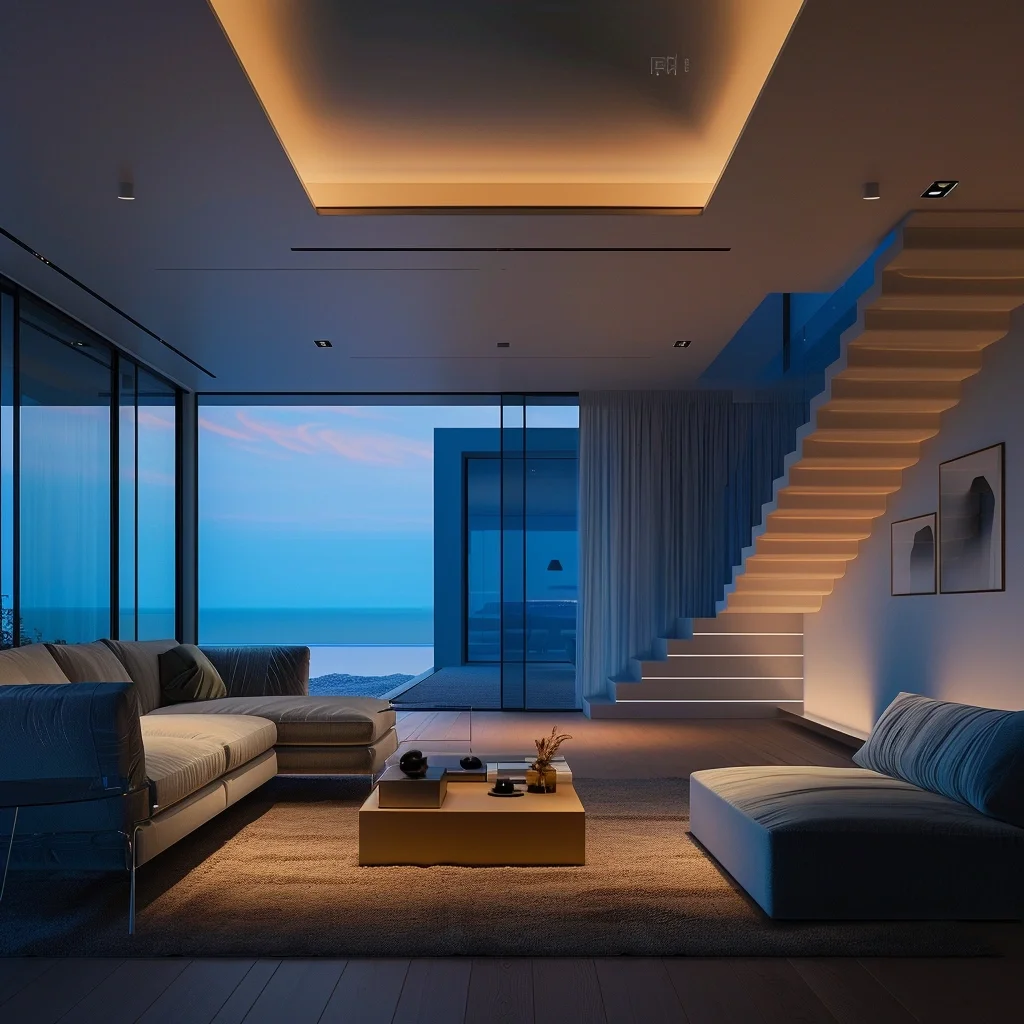Is smart lighting system or ordinary lighting suitable for home lighting? Undoubtedly, everyone has different choices regarding this question. However, when the budget allows, people will likely choose a smart lighting system. So, what exactly is the difference between a smart lighting system and traditional lighting?
Control methods: The control method of ordinary lights is relatively simple and only requires manual switching. The advantage is simple operation without additional equipment. Smart lights have more control methods. Lights integrated with the HarmonyOS support five control methods: smart switch panel, central control screen, smart mini (wireless mobile control switch), voice (Xiao Yi butler), and Smart Life APP.
Remote control: You can turn on the air conditioner and lights with your mobile phone APP before arriving home. In hot or cold weather, you can feel a comfortable temperature as soon as you return home. The HarmonyOS realizes the interconnection of people, vehicles, and homes. Both mobile phones and cars can remotely control the smart lights at home. Smart linkage offers many ways to play: Scenes can be switched freely, and sleep mode, reading mode, reception mode, etc.
can be turned on with one click. Smart lights can also be written into one scene with other smart home devices at the same time to realize the interconnection between smart home devices at home.
Dimming and color adjustment: Traditional lighting uses infrared remote control. Manual dimming is not possible and there is no memory storage function. The color temperature is usually fixed and single. Only some lights can provide limited color temperature adjustment options, but the price is relatively expensive. When smart lights are turned on, the light gradually brightens from dark; when turned off, the light gradually dims from bright. ‘Warm light – neutral light – white light’ can be freely controlled to achieve ‘0 – 100%’ stepless dimming, avoiding sudden changes in brightness that stimulate the human eye and giving the human eye a buffer to protect the eyes.
Time management: Ordinary lights are turned on and off immediately. Turning on the light when going to the toilet at night is dazzling and there is no eye protection function, interrupting sleepiness. Smart lights can be controlled with a delay. Timing is set at different time periods (morning, noon, evening, etc.) every day. The lights can be automatically turned on to an appropriate brightness according to the system settings. When late at night, all lights will be automatically turned off. When going out, set the ‘away from home mode’, and all lights and electrical appliances will be automatically turned off. Set the night mode, and the soft dim light can also avoid disturbing family members’ sleep.
Energy saving: Traditional lights have a fixed brightness, no power-saving function, consume a large amount of power, and cause energy waste. Smart lights can perform intelligent dimming on most lights and provide sufficient lighting where and when needed. Implementing intelligent lighting control can generally save 20% to 40% of electric energy, not only reducing users’ electricity bills but also reducing the power supply pressure.
Advantages of smart lights: The fully automatic dimming smart lighting control system adopts a fully automatic working system.
The system comprises several fundamental states that automatically switch between each other according to predetermined schedules. It also adjusts the lighting to the most comfortable state by fully utilizing natural light sources. Intelligent lighting systems can regulate natural light by controlling architectural devices with light-modulating capabilities, and they can be connected to lighting systems. In case of weather changes, the system automatically adjusts to maintain the light efficiency at a preset level.
Intelligent lighting systems can be programmed with various scene modules, allowing users to operate them through Huawei’s central control screen or the Oslo 6-in-1 smart panel. Additionally, users can set different lighting modes for different scenes via the control panel.
Energy-saving intelligent lighting control systems can intelligently dim most lighting fixtures, providing adequate illumination where and when it is needed. Implementing intelligent lighting control can generally save 20% to 40% of electrical energy, reducing user electricity costs and alleviating power supply pressure.


